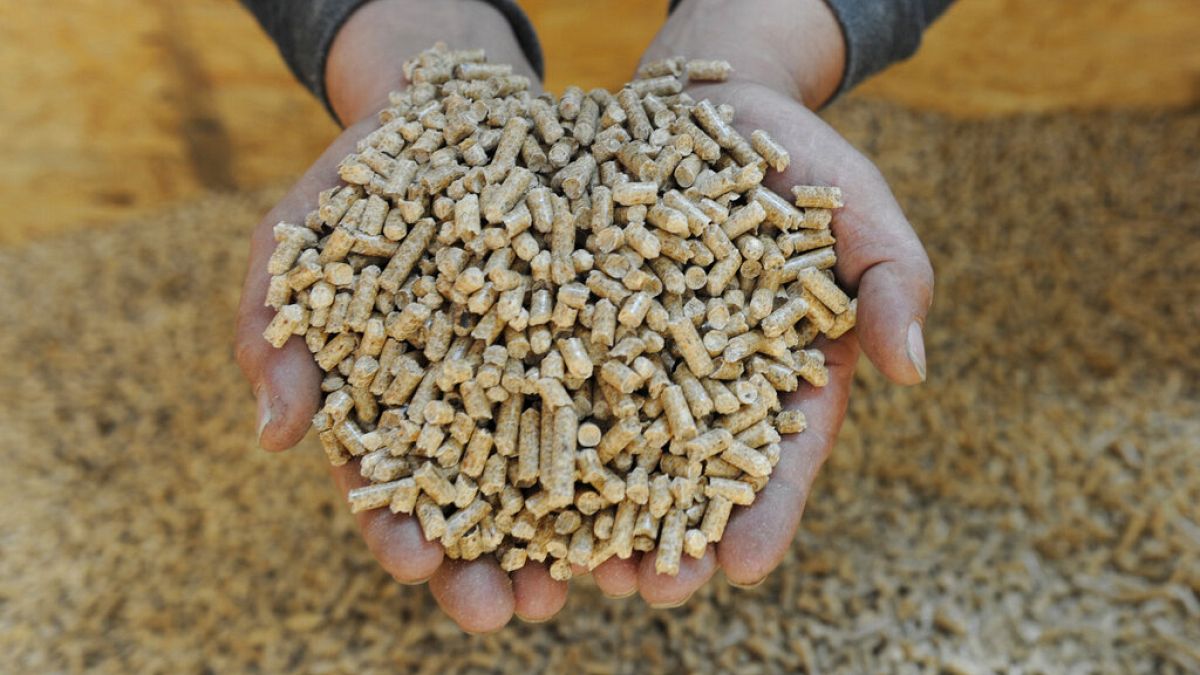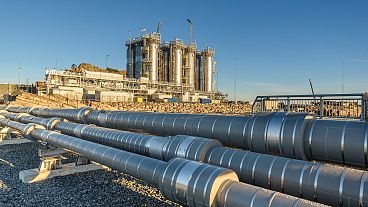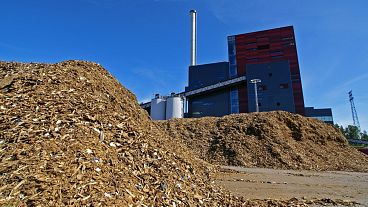Wooden houses and sturdy furniture could soon receive potentially lucrative EU certification for their presumed role in reducing atmospheric CO2, but green groups are concerned that new rules on accounting for carbon removals do little to protect forests and will facilitate corporate greenwashing.
MEPs and government negotiators agreed a provisional text of the new Carbon Removals Certification Framework (CRCF) in the early hours of Tuesday (20 February) after protracted back-room talks in Brussels. “It will foster private investment and develop the voluntary carbon markets while respecting climate integrity and preventing greenwashing,” said Lidia Pereira (Portugal/EPP), who headed the European Parliament’s team.
Under the deal, to qualify as a permanent carbon removal, sequestered CO2 must be disposed of in a way that is presumed to keep it out of the atmosphere for at least several centuries. In the case of current industrial carbon capture and storage (CCS) pilot projects, this involves pumping it under the seabed in depleted offshore oil and gas fields.
But the new rules also impact on the use of Europe’s natural forest carbon sinks. A certified volume of carbon removal would be ascribed to wood that is logged for use in construction or to make furniture – provided in both cases that they will last for at least 35 years. Other permitted means of long-term temporary CO2 storage include so-called carbon farming methods such as restoring forests and soil, wetland management, or developing seagrass meadows.
Soil-related carbon farming approaches covered by the new rules include practices that reduce emissions of nitrous oxide related to the use of fertiliser, as well as carbon reductions related to wetland management, reduced tilling and planting of cover crop between harvests.
Farmers are looking at a potentially lucrative new revenue stream, as industry currently has to pay through the EU emissions trading scheme for every tonne it releases, and demand for certified offsets is likely to be high. In a measure intended to avoid potentially harmful speculative acquisition and repurposing of agricultural land, all these carbon farming practices must be carried on for at least five years to gain certification as a carbon removal.
The rules are important in terms of the EU’s climate targets, which stipulate a ‘net’ reduction in greenhouse gas emissions of 55% by the end of the decade compared to 1990 levels, and attainment of net-zero by 2050. Legislators have recognised that, short of halting industrial production, this can only be done by capturing CO2 from factories or removing carbon it the atmosphere.
The CRCF agreement – which awaits formal endorsement by the European Parliament and EU Council – was given a cautious welcome by the forestry sector, which has been lobbying hard in Brussels throughout the von der Leyen commission’s green deal policymaking both for a means to valorise carbon sinks, and continue to harvest wood both for use as timber and as fuel.
Swedish Forest Industries director general Viveka Beckeman said her sector's “climate work” could benefit from the new accounting framework “as long as it is not used to limit active forest management”, with the trade association noting that much will depend on how the commission and a special expert group elaborate the small print of the incoming certification rules.
“There is a risk that the framework will be used to limit forest industries,” Beckeman said, asserting that this would have a negative impact on the climate as well limiting potential job creation related to the supply of raw materials. “Achieving high impact demands focus on simple and predictable rules that make it attractive to invest in carbon capture, especially in large and long-term projects such as bio-CCS technology and wooden buildings.”
Likewise, the Confederation of European Forest Owners (CEPF) welcomed the agreement, policy advisor Dániel Komlós told Euronews. “Forestry can deliver its fair share in climate change mitigation through this framework, if predictability and stability are ensured in this new legislation’s groundwork,” he said.
But forest conservationists were appalled by the outcome of the negotiations. Martin Pigeon, a campaigner with the green group Fern, was particularly critical of the potential for firms to offset their own CO2 pollution by buying removals certificates. “This is an absolute climate red line that jeopardises the goal to reduce fossil emissions as fast as possible, and should never have been included,” Pigeon told Euronews. “Negotiators must go back to the drawing board.”
Fern is also concerned that lawmakers have designed legislation that makes a case for a biofuel market where burning wood is considered carbon-neutral as the CO2 emitted was previously drawn from the atmosphere, and deemed carbon-negative overall if the greenhouse gas is then pumped into permanent storage.
“The draft regulation tries to create a market case for bioenergy with carbon capture and storage (BECCS or Bio-CCS), with insufficient safeguards for the extraction of even more wood from forests in a context when global and European forests have already been over-logged,” Pigeon said.
Carbon Market Watch, a Brussels-based NGO, was highly critical of the new law and its provisions on temporary carbon storage, which it said would promote greenwashing. “The CRCF deal is deeply problematic,” said Wijnand Stoefs, the group’s carbon removals specialist. “Even the fundamental principle that removals must complement, not substitute, emission reductions has been violated.”
Among what he described as a “litany of errors”, Stoefs listed the counting of “temporarily parked” carbon as a removal and insufficiently robust sustainability criteria for biofuels, but acknowledged a “smattering” of good ideas.
Among these, carbon farming will have to be done in a way that promotes biodiversity, and there will be a periodic review of the impact of consumed biomass, Carbon Market watch noted. Moreover, CRCF units will have different values depending on the type of carbon removal they certify. They will not be eligible for use in the global aviation emissions offsetting scheme CORSIA, and third countries will not be able to buy them to fulfil their own pledges under the Paris Agreement.



